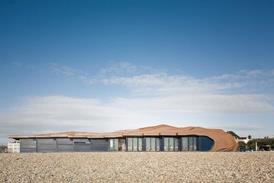It cites governments' Kyoto-inspired fossil fuel levies as a stimulus to wider adoption of electronic systems such as DALI (Digital Addressable Lighting Interface).
DALI is a very simple idea that – like many other good, simple ideas – has very profound results. The idea is to separate the process of supplying electricity to a light fitting from the process of turning it on and off.
It's now possible – more easily and cost-effectively than ever before – to provide optimum conditions for different lighting users, whatever the task or activity where light is required.
For example, it's now widely recognised that high frequency fluorescent lighting, by eliminating flicker, improves visual comfort and rules out a possible cause of eyestrain and headaches. The change to a high frequency electronic ballast makes it just a small extra step to incorporate dimming, giving even more ability to tailor lighting to users' need.
Benefits of going digital
The DALI digital system provides greatly improved flexibility compared with analogue 1-10 V systems. The system also offers the major advantage of future-proofing, since it can be progressively enhanced as further DALI-compatible products enter the market.
Because DALI is an industry standard, systems can be made up using products from more than one manufacturer, offering optimum flexibility for the specifier both at initial installation and at any later extension or modification.
DALI enables up to 64 luminaires on the same control circuit to be switched and dimmed independently. The luminaires on a circuit can be allocated to as many as 16 freely-defined groups, which enable several different lighting set-ups to operate at the same time. A 'group' could even be a single luminaire, in that it could be used separately, for instance, for security lighting.
DALI controlled lighting can be operated from many different manual or automatic controls to create the desired lighting effect, including light level, time and zone control as required. It thus offers optimum flexibility for current needs, combined with ongoing adaptability for the future.
Cost savings
Separating electricity supply from the switching and dimming circuits means that users benefit by minimising the complexity and cost of power cabling.
In refurbishment projects, new lighting can be connected to existing power wiring – regardless of layout – saving the cost of new cabling. Extensions can be added to existing wiring or connected to new supplies, whichever is convenient. Then only a twin signal cable is needed to link the luminaires to the DALI controller, connected in any order because the system can independently address specific groups of fixtures.
For new build, where new wiring is being installed, a single cable incorporating both power and control conductors is cheap and easy to install. There's no need for the wiring layout to follow the layout of the building or the organisation of the activities within it. This is specially important for speculative building projects, where the occupier and use of the building are often not known when the lighting is installed.
DALI enables the lighting to be installed, but left unprogrammed until a new occupier's needs are known – and can be changed whenever required simply by reprogramming the digital instructions, hence avoiding the cost and inconvenience of rewiring. Reprogramming is quick and easy, for example with a hand-held infrared remote controller.
A typical DALI system can use, say, the Philips five-circuit room controller. This enables up to 20 luminaires, in up to five groups, to be remotely controlled with up to four preset lighting scenarios, and using a variety of control options including presence detection, daylight linking and infrared command.
Luminaires can participate in more than one group if required, increasing the range of control options. This means that even a quite small room or area can have its own, highly flexible lighting, finely responsive for user's needs. Yet for all their sophistication, such systems are economic to install, easy to operate and extremely cost-effective.
The availability of luminaire-based and room-based systems, whether using 1-10 V analogue controls or DALI digital controls, provides specifiers and users with tremendous flexibility, freedom of design and choice. This means that every user need can be satisfied with a lighting control system that gives optimum visual comfort combined with excellent cost-effectiveness.
Fancy a levy?
The Climate Change Levy came into force on 1 April. Typical energy bills now include a 10-20% premium to encourage efficiency and reduce emissions. Electricity prices will rise by 0.43 p/kWh, gas and coal by 0.15 p/kWh, and lpg by 0.07 p/kWh. Revenues from the new levy are being recycled back to business through a 0·3% cut in NI contributions and support for energy saving technologies. Capital allowances are being made for investments in energy efficient technologies, including lighting and lighting controls. The criteria for products to qualify for capital allowances can be found at www.eca.gov.uk or by calling 0800 585794.Downloads
Two circuit room control
Other, Size 0 kbDALI room controller
Other, Size 0 kb
Source
Electrical and Mechanical Contractor
Postscript
John Rothery is a controls specialist in the Philips Lighting Lamps and Gear division based at Oss, The Netherlands.



















